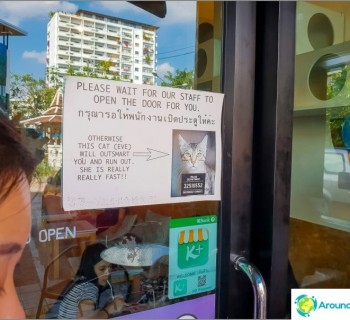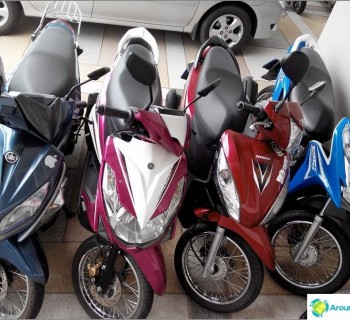We are already thinking about the next trip to China, but the exchange rate is not happy. When we returned at the end of spring, the exchange rate decreased, and now it is growing again. Thus, food in China (and not only it) sometimes becomes cheaper for us, sometimes it becomes more expensive 🙂 And here's how to calculate the budget for a trip in such an unstable time? Moreover, recently there was a fall on the Chinese stock exchange, but it has not yet been reflected in the currency rate..
Okay, if anyone is going to China in Hainan, then here are the prices in yuan for a guide. Currently, 1 yuan = 9.5 rubles, that is, everything can be easily multiplied by 10. Not so long ago, they multiplied by 5-6. And the dollar exchange rate does not change - 6.2 yuan for 1 dollar.
Prices in for food in China on the island of Hainan
For the whole of China I can not say anything, since we were only on the island of Hainan, and not in the popular resort of Sanya, but in the small town of Lingshui, 80 km from the resort. We found 3 supermarkets there, the prices in them did not differ much, something was cheaper, something was more expensive, but in general the check for purchases did not differ. These supermarkets had several things in common:
- Lack of European food: no normal bread, only processed cheese, only long-lasting milk, only Snickers and Dove chocolate, butter appeared once a month, no usual canned food / buckwheat / cocoa / sour cream / cottage cheese, tasteless pastries and sweets. The list is incomplete, this is what I immediately remembered.
- In the evening you can't buy fish / meat and some vegetables / fruits, everything is sorted out during the day.
- Prices are the same as on the market, so there is no point in going to the market.
- The price of products by weight is indicated for 0.5 kg, not for 1 kg! Very unusual at first.
- The names and even more so the composition on the packages is almost never duplicated in English. You have to guess or find out in advance which is which.
Certainly, in Sanya the assortment will be wider, but the prices, I think, are the same. Most of all I liked the Cherry tomatoes, I have never eaten so delicious in my life, and most importantly they are cheap. I now dream of them at night. But along the way, the product is seasonal, they were not available for long. I am silent about mango, it is tasty everywhere 🙂 Thai yellow was not found, but there were other equally tasty varieties.
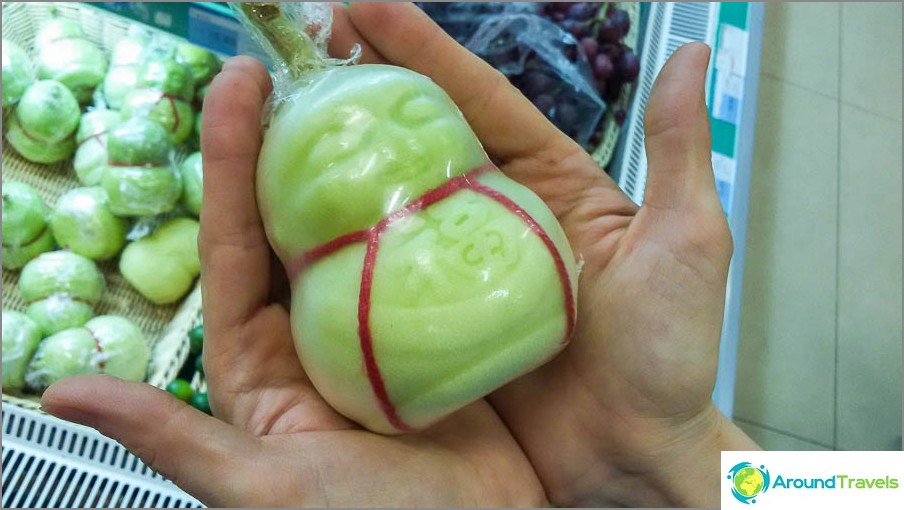
Pear shaped like Buddha
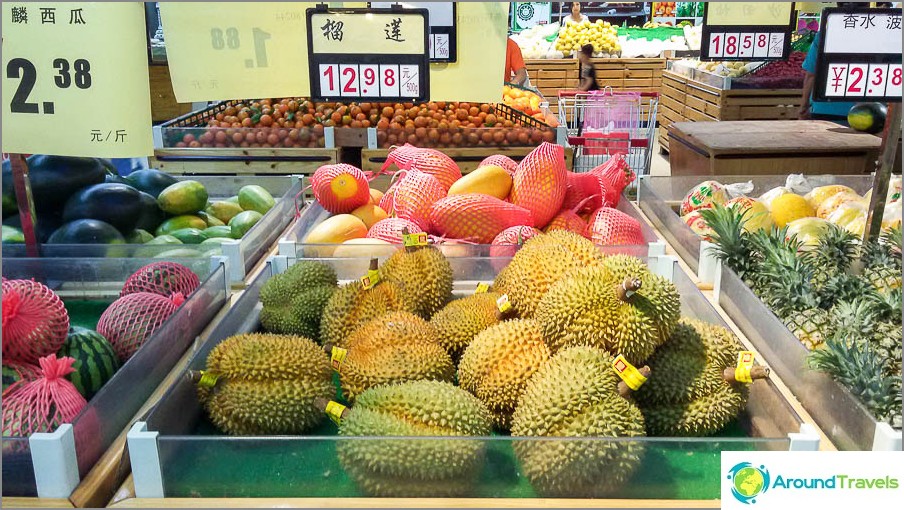
Durians are very expensive
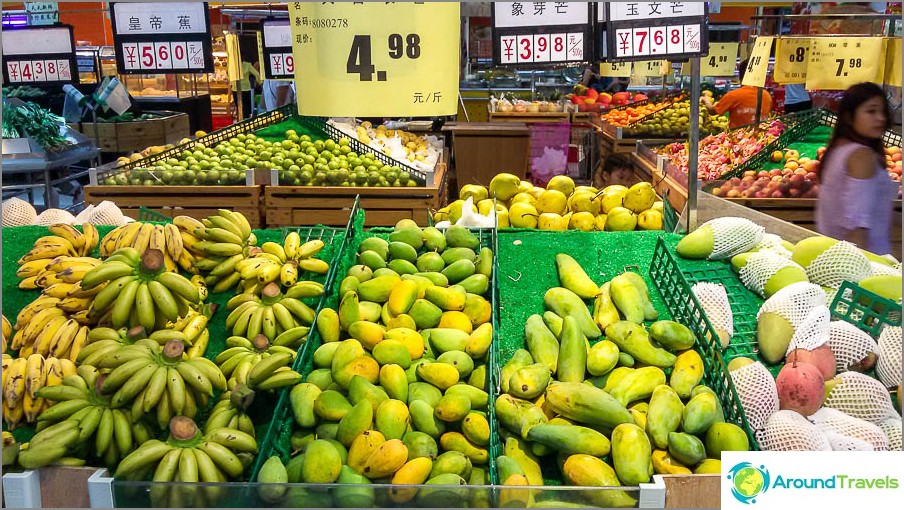
Bananas on the left, mangoes on the right
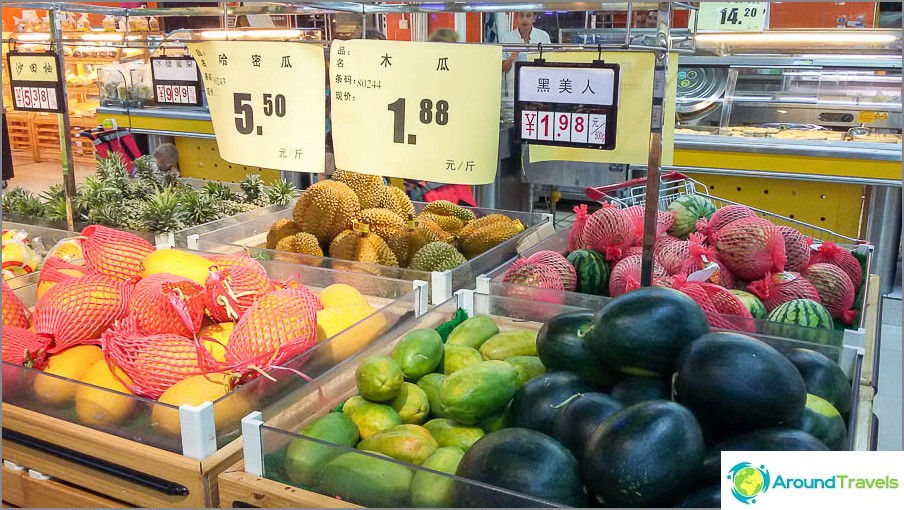
From left to right - melons, papaya, watermelons
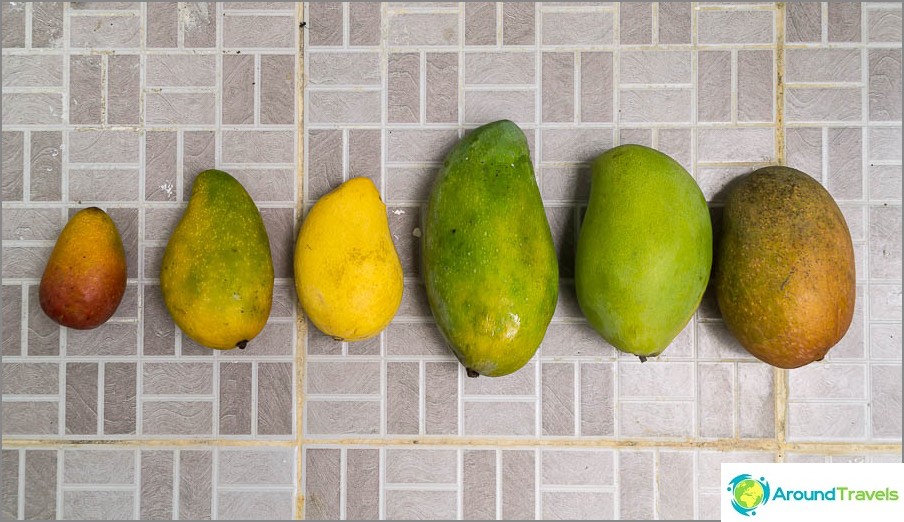
Assortment of mangoes
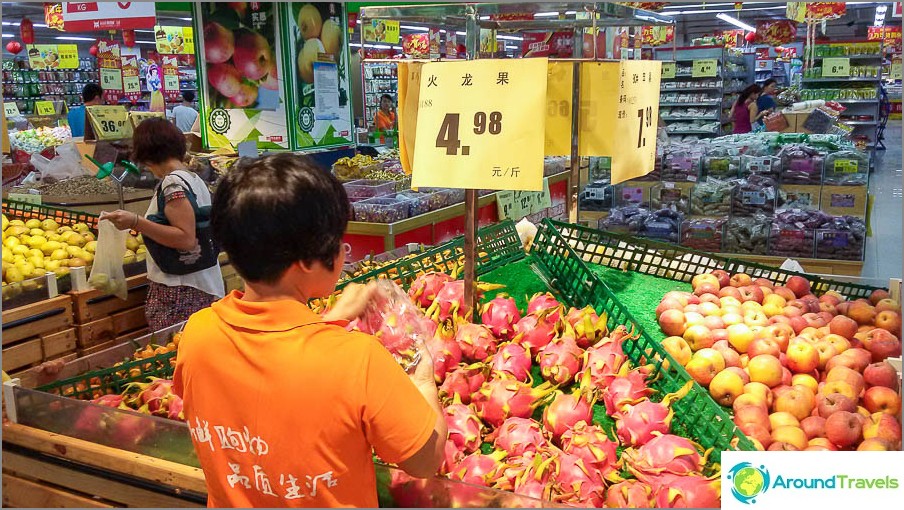
Dragon fruit
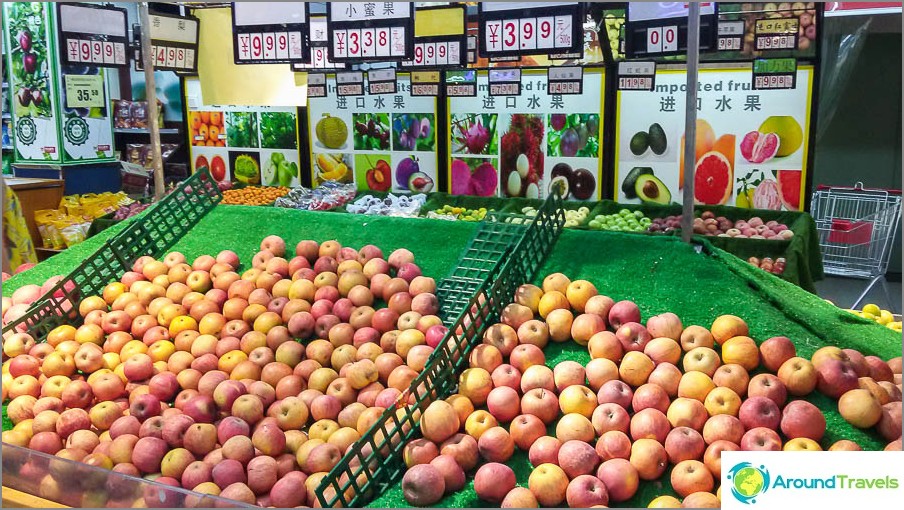
Apples cost depending on the size, large ones are already 7-10 yuan
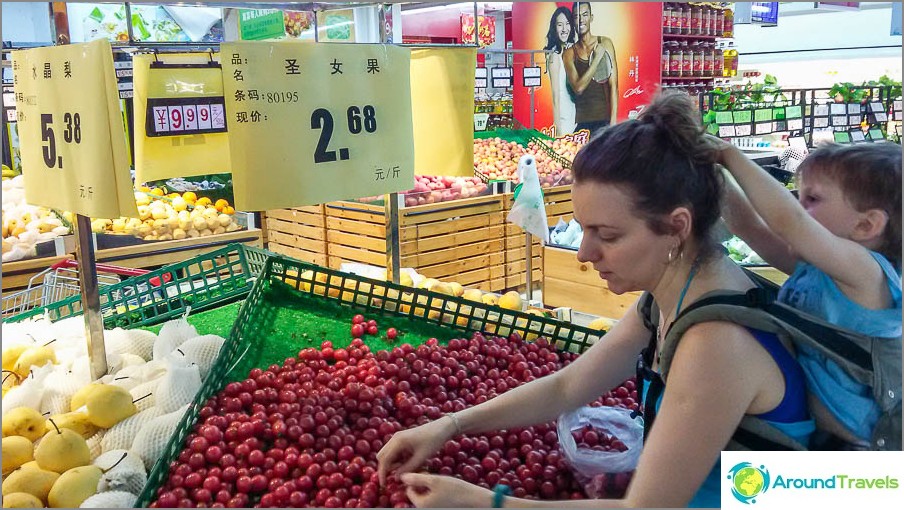
Super Cherry Tomatoes
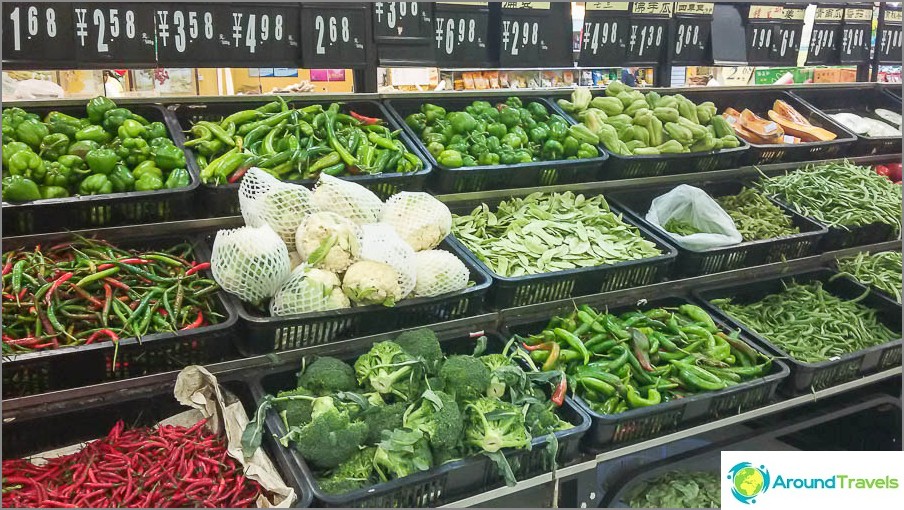
All kinds of vegetables
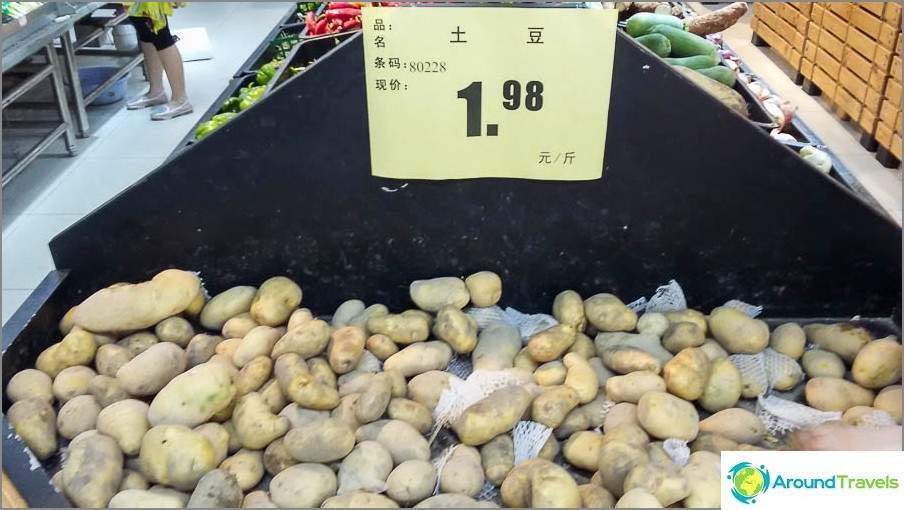

Onions and sweet potatoes
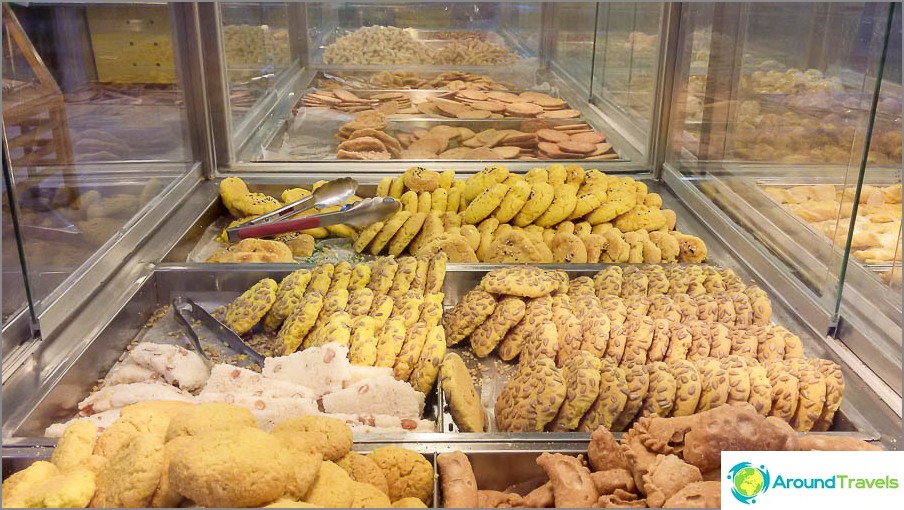
I don't know the price of cookies, but it tastes so-so
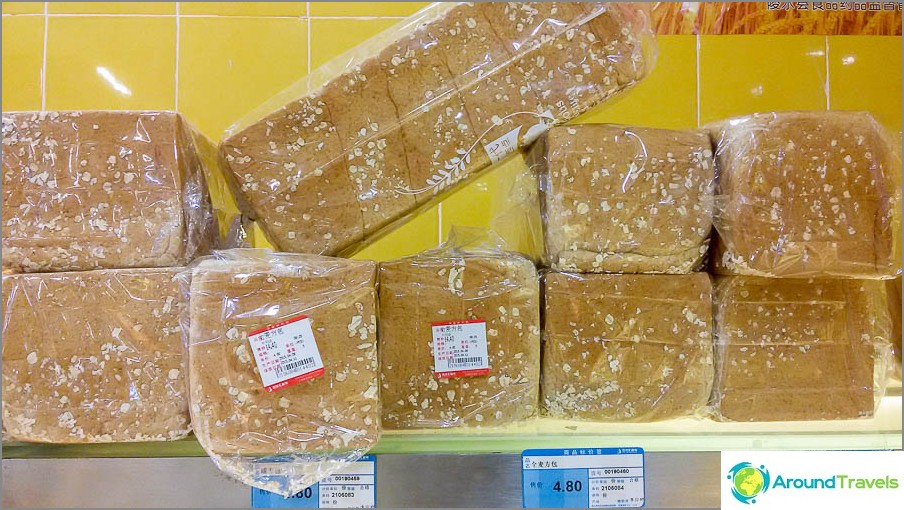
Loaf of bread, for a whole loaf 14.4 yuan
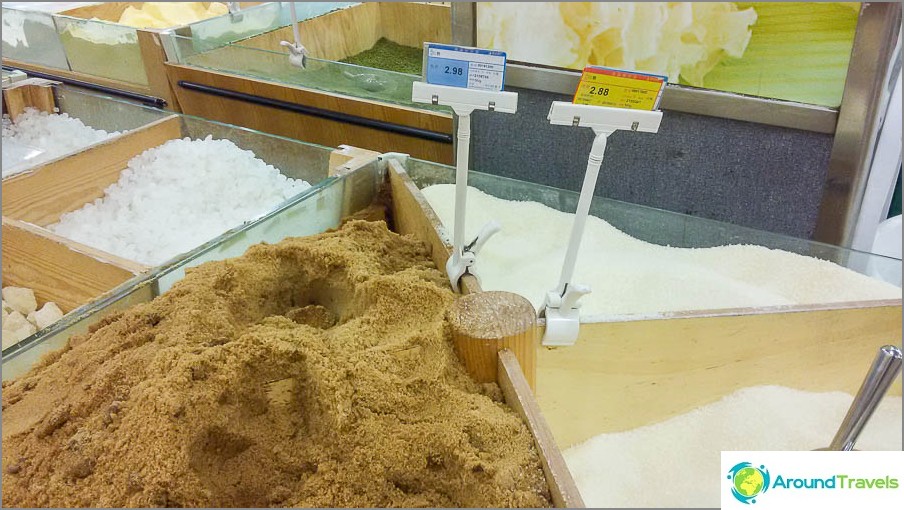
The price of various types of sugar
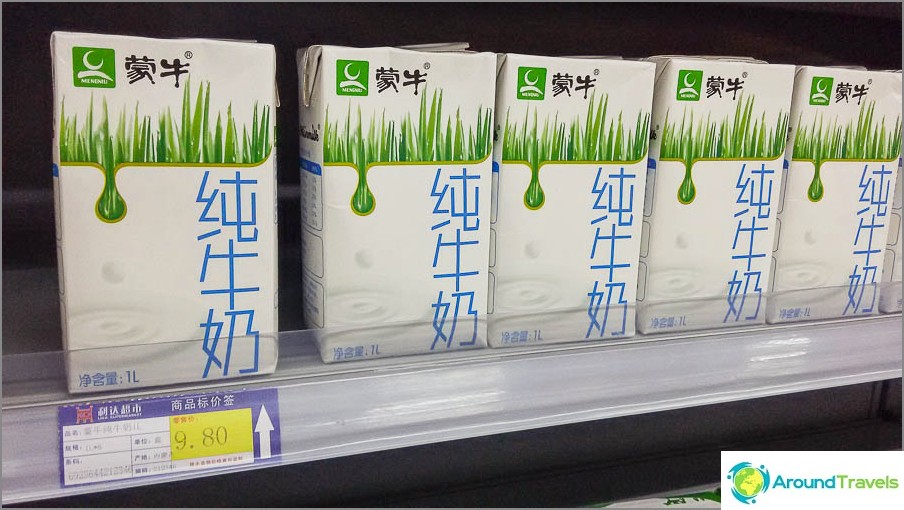
Long-term storage only
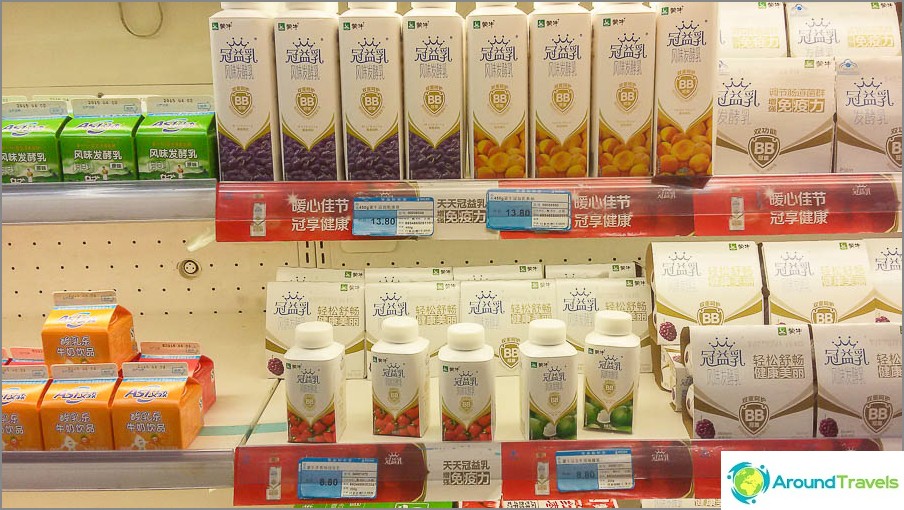
Yogurt 450 grams (top shelf)
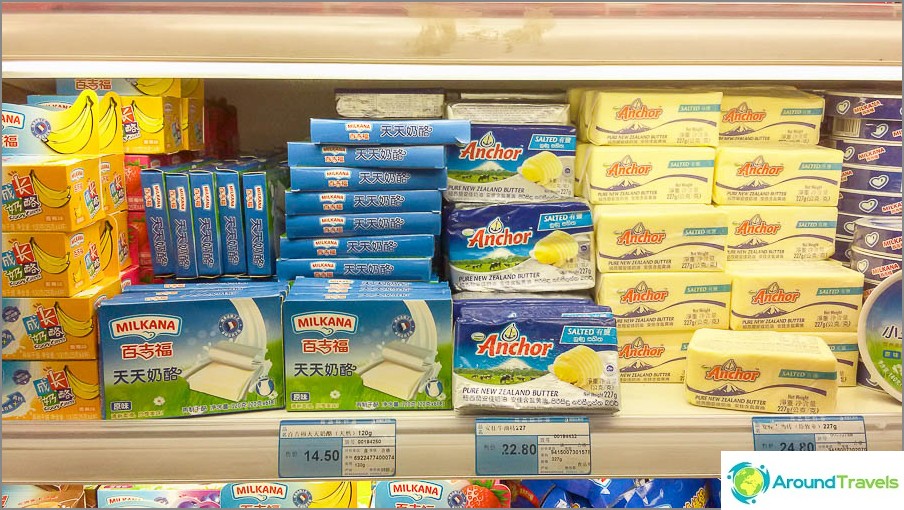
Processed cheese (140g) and butter
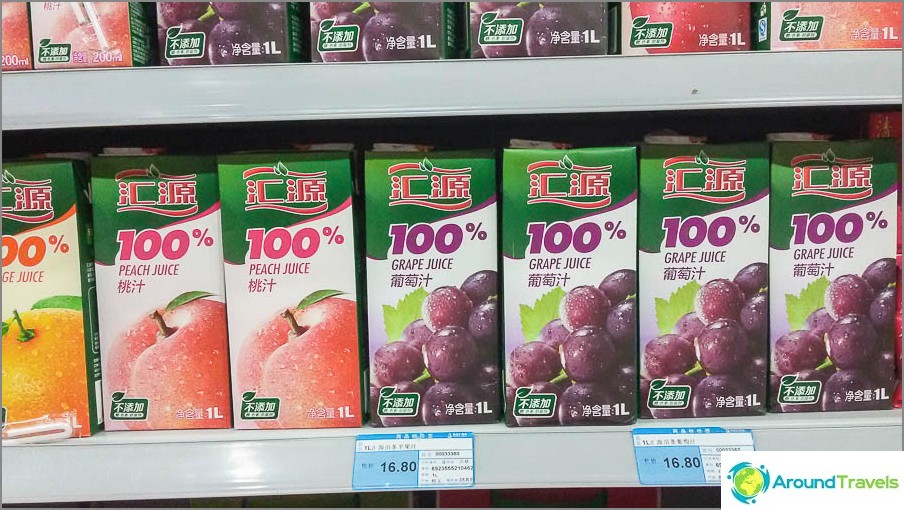
Juice is only one option
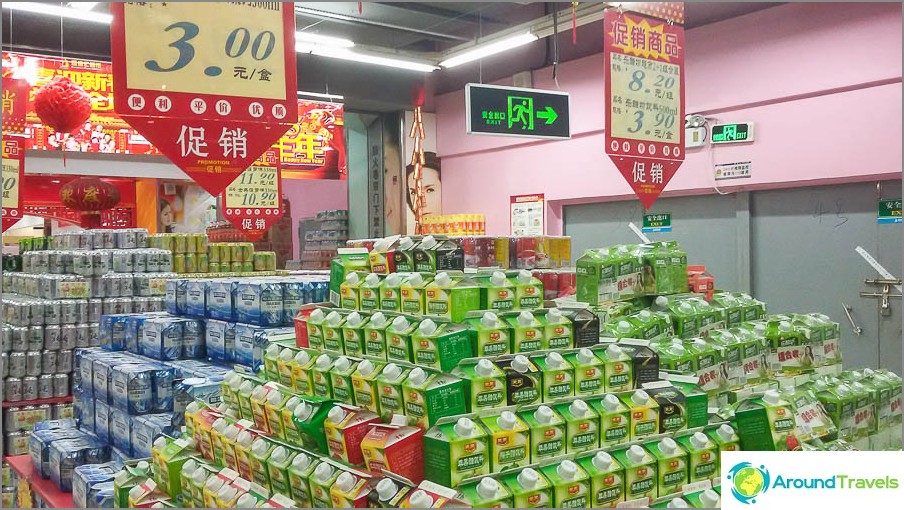
Vinegar in bags, you won't guess
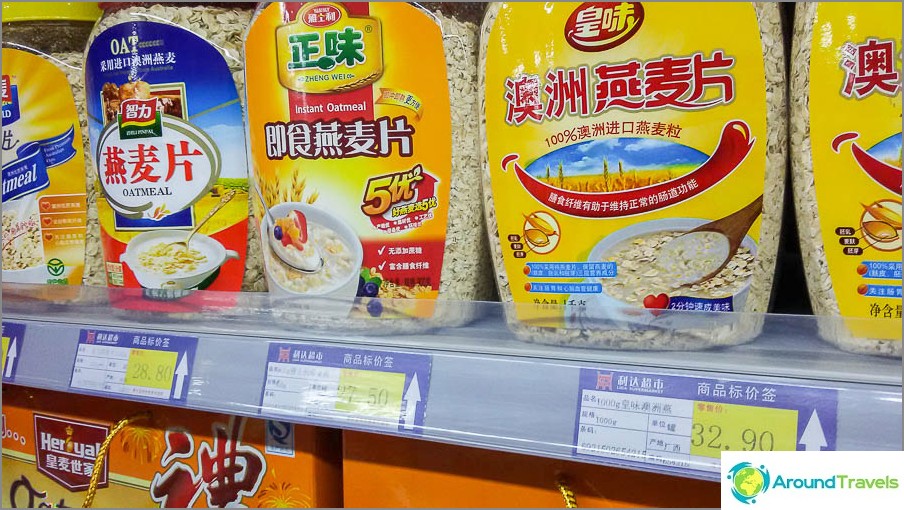
1 kg of rolled oats
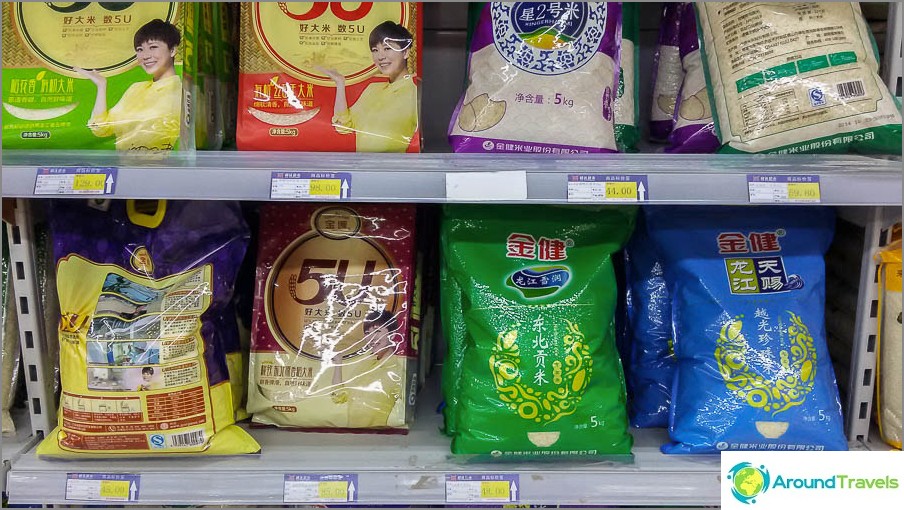
Packing 5 kg of rice
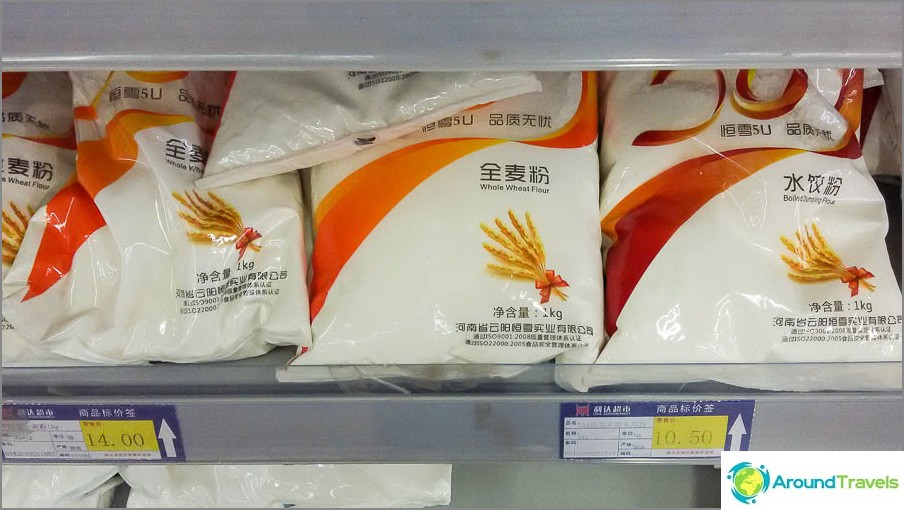
Wheat flour, 1 kg
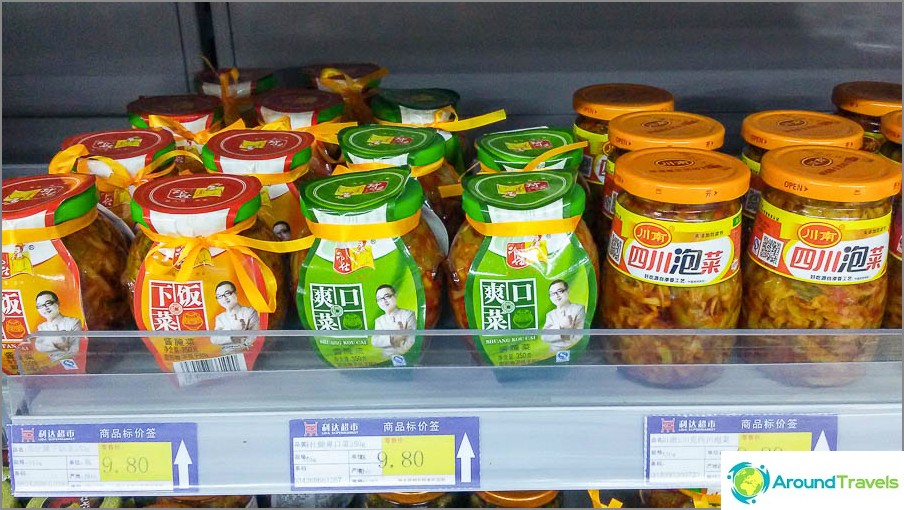
Incomprehensible canned food
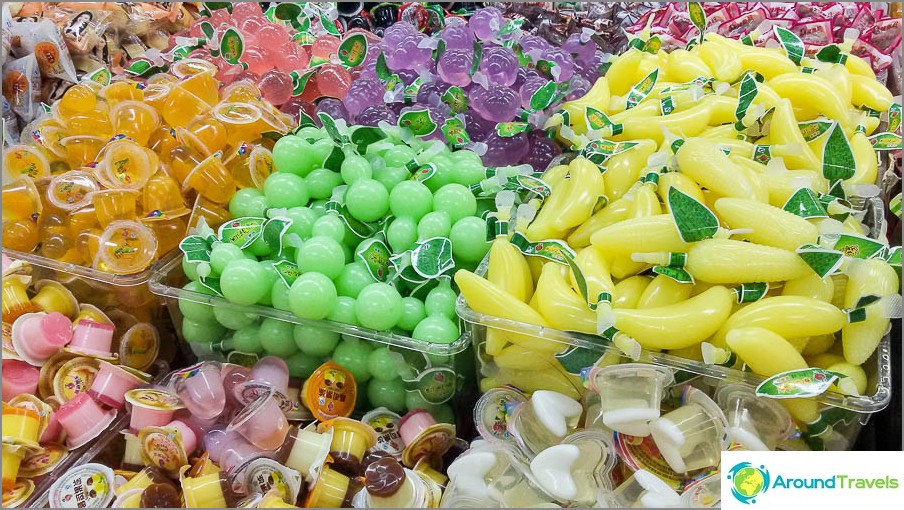
Sweets are some kind of chemical trash
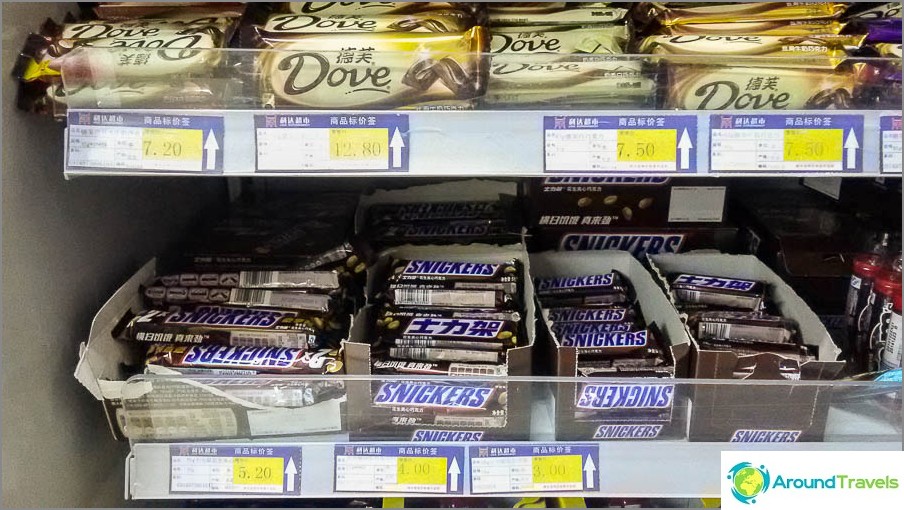
Chocolate Snickers and Dove
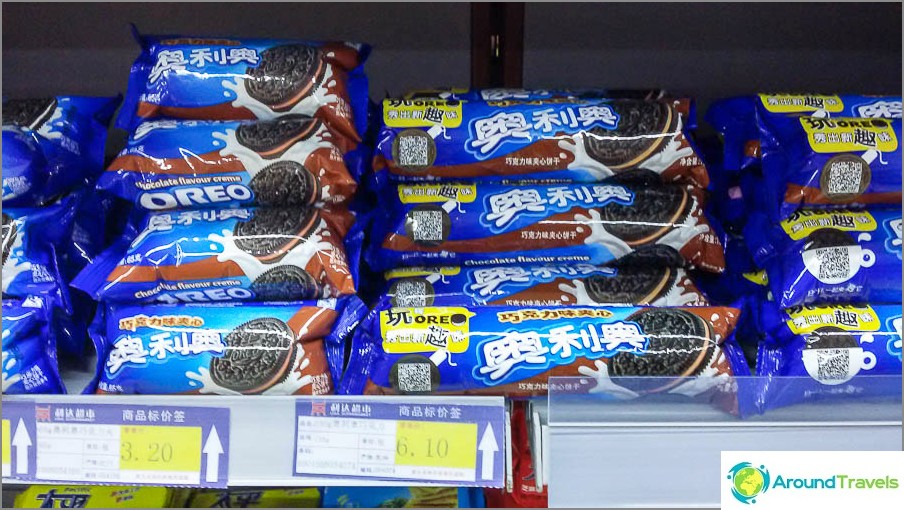
Oreo cookies
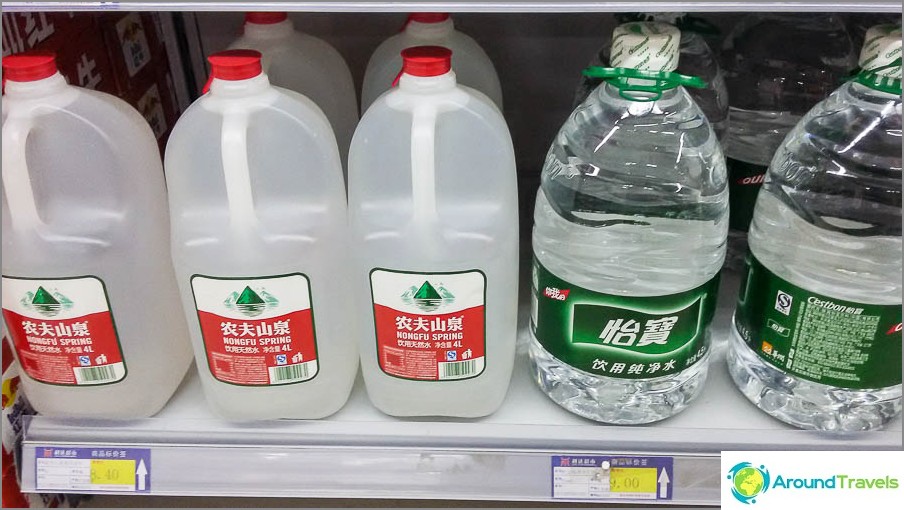
4.5 liters of water costs the same as a few 1.5
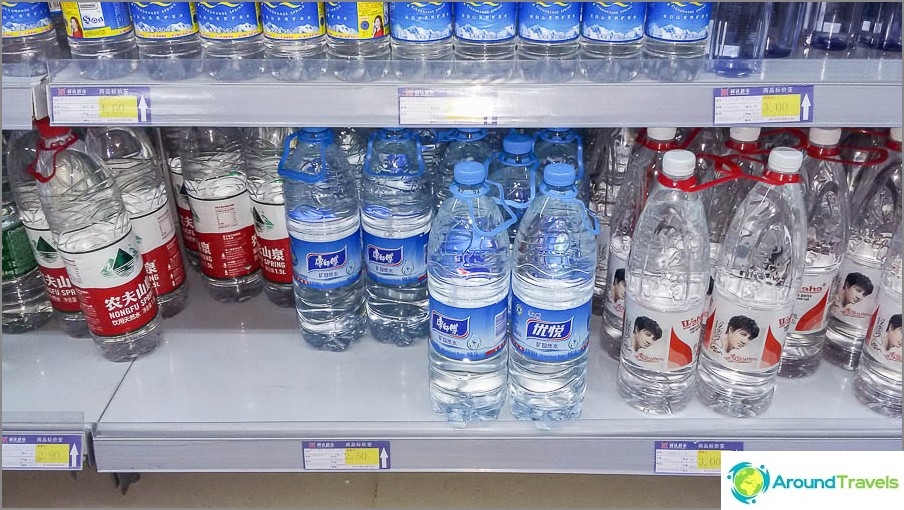
We took 1.5 liters each, since five-liter is almost more expensive
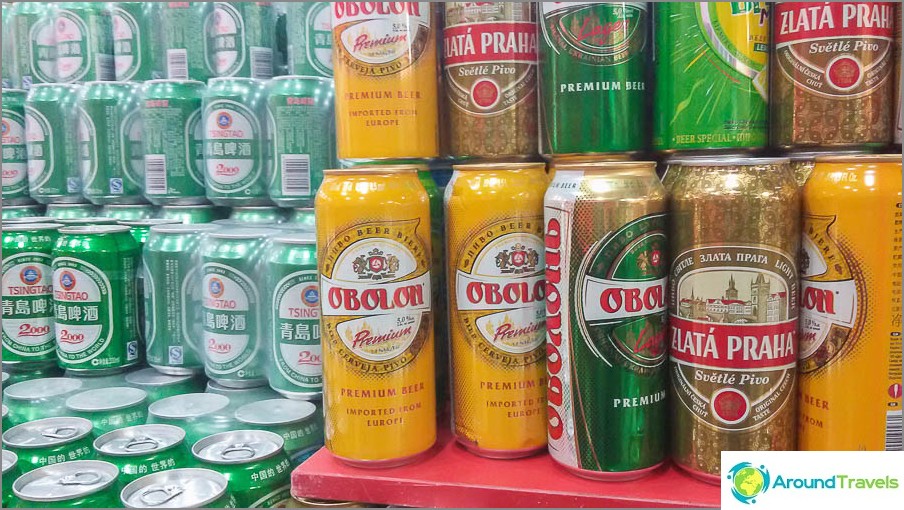
A beer with a familiar name, if I'm not mistaken at 20 yuan. Normal 5-10 RMB.
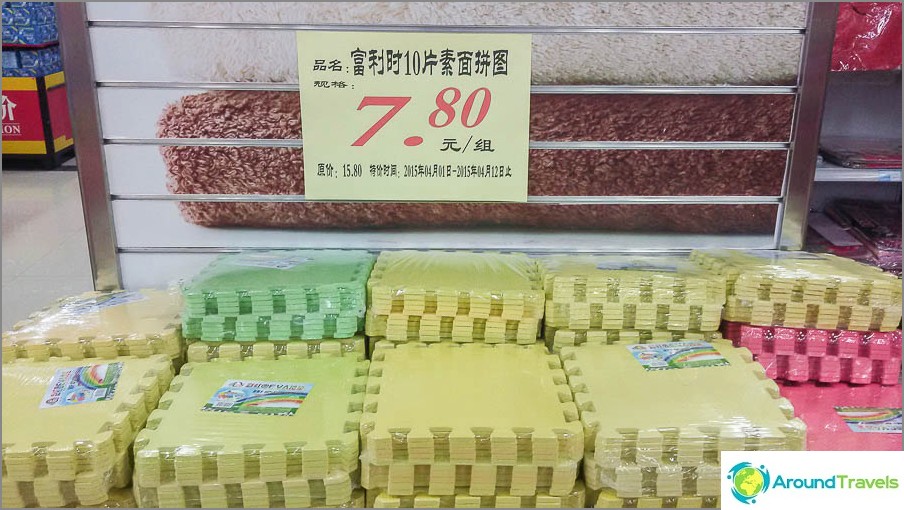
Puzzle mats are very inexpensive
Prices in a cafe
We ate in cafes not often, since they were not right next to us. Cafe, as elsewhere, can be subdivided, at cheaper and more expensive. Those that are cheaper, with a simple interior and very small. They are often kept by Muslims (or have we stumbled across them like that?), And all the dishes presented are quite edible (and even tasty). I really liked the half-baked fried potatoes, especially they went well with the rice. I would never have thought of such a combination myself. We mostly ate something like noodles with vegetables, rice with vegetables, potatoes, and combinations thereof. Somewhere they took dumplings, for some reason they did not meet so often. As far as I understood from the words of the translators, we ate mainly food of northern cuisine..
Prices for simple meals are around RMB 15-30. And fried shrimp in a street cafe cost 25-30 yuan. Complex dishes, dishes in civilian cafes, as well as European food were more expensive. For example, a small pizza 50 yuan.
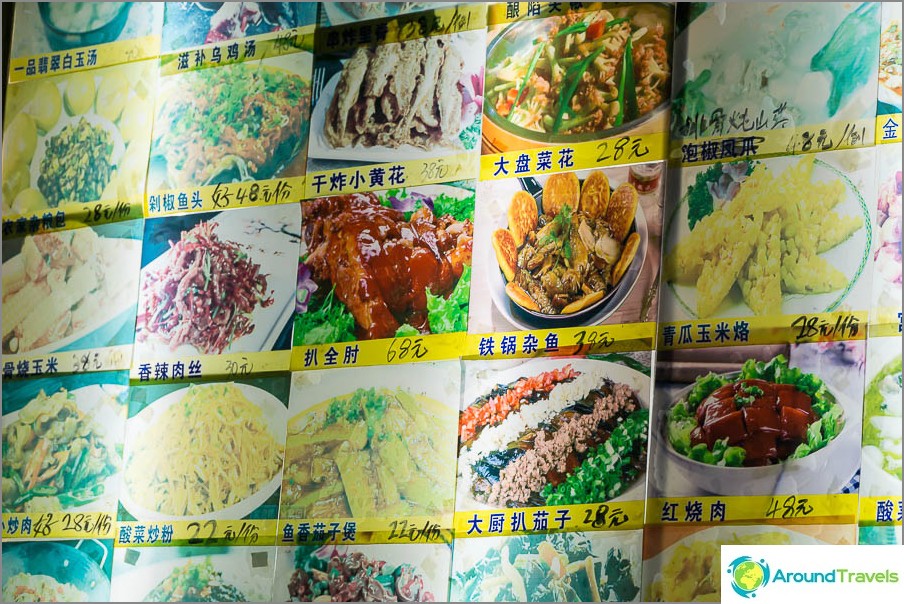
Prices in China in a cafe
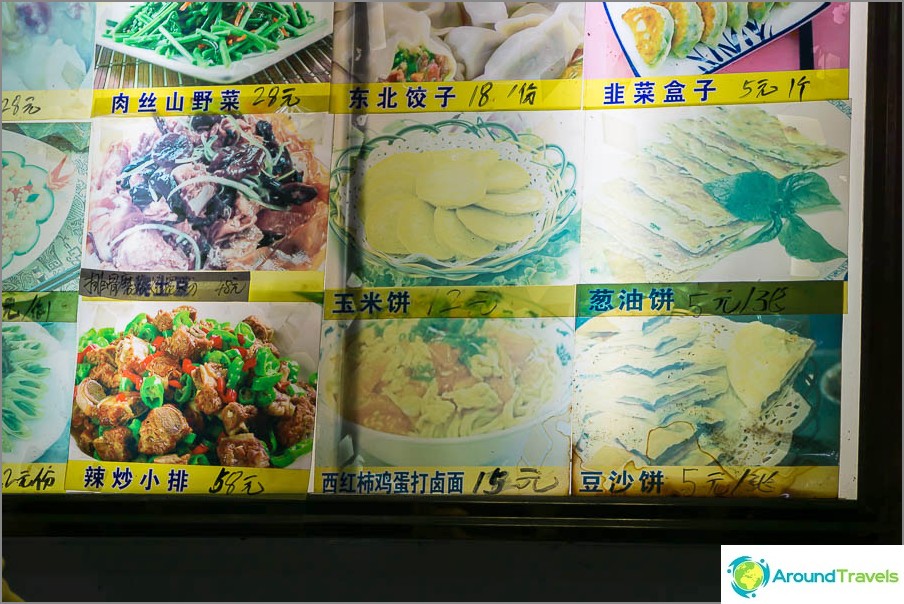
In the lower right corner there are delicious cakes, such as pasties

Pizzeria-style cafe and 50 RMB pizza
P.S. Connoisseurs of China, like the rest of the country with an assortment? Is there food we are used to in supermarkets?

